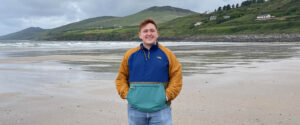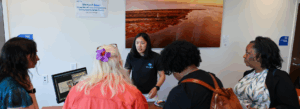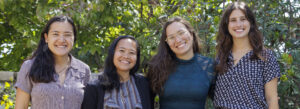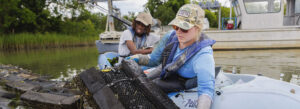Field Course Gives Teachers Marine Education Experiences to Bring Lessons into the Classroom
Teaching marine science in front of a blackboard in a school classroom can feel disconnected and lifeless from the water and animals being taught about. The Coastal Ecosystems Field Course for Teachers gives teachers the hands-on experience and knowledge to bring marine science alive for their students.
This June 13 teachers from across Virginia spent four days at the Virginia Institute of Marine Science (VIMS) Eastern Shore Laboratory traversing and exploring the coastal waterways around the town of Wachapreague during the field course, hosted by the VIMS Marine Advisory Program. The experience is designed to enrich teacher understanding of coastal and estuarine science, provide skills in planning and conducting marine education activities, and introduce teachers to research-based lessons for teaching science.
“We want to introduce them to ocean science content and show them how they can incorporate it into their classroom,” said Lisa Lawrence, Marine Education Program Lead with the VIMS Marine Advisory Program, “we want to expose them to that out in nature and not just learning about it in the classroom.”
Since 2001 educators from VIMS have been taking teachers out into the field on the Eastern Shore to give them experiential science education that they can take back to their students.
“I figured that this would be a great experience to, one, network with other science teachers, and two, gain a little bit more knowledge about the ocean. I wanted to get some ideas on how to incorporate ocean litter literacy into my curriculum,” said Erica Sears, a sixth-grade science teacher at Churchland Elementary School in Portsmouth.
Each day started with the exploration of different coastal habitats, from digging for worms and invertebrates on a mud flat to seining for animals in a bayside salt marsh. Upon arriving at each habitat location for the day the teachers conducted water quality tests, including pH, salinity, and clarity. After the water quality tests are complete the teachers explore the flora and fauna of the habitats, taking a few samples with them to examine when they return to the lab.
“Every day I learn something new, multiple things that I didn’t know before, that I can take back to the kids,” said Tonya Felice, an oceanography and environmental Science teacher at Lloyd C. Byrd High School in Chesterfield, who attended the field course for her third time.
Felice’s previous experiences at the field course inspired her to organize a field trip to the VIMS Gloucester Point campus for her students at the end of the year, to give them an opportunity to see much of what they learned about in the classroom firsthand.
Upon returning to the VIMS facility in Wachapreague the teachers visit the lab to place the collected samples under the microscopes and learn more about some of the animals gathered during the morning. Then they are shown lessons and activities from the Virginia Scientist and Educators Alliance (VA SEA), which highlight topics discussed during the morning fieldwork and give the teachers examples of how they can bring more hands-on science education into their classrooms.
“The lessons are great. It’s always good to have lessons that you could pull up and not have to reinvent the wheel,” said Sears.
“I’m looking for ways to extend this type of learning into my classroom, I’ve already picked up different activities where I can bring stuff in and become a stronger educator.”
– Karen Bendorf, Oceanography teacher at Westfield High School in Chantilly.
Words and Photos by Lathan Goumas | Virginia Sea Grant
Published August 5, 2023





